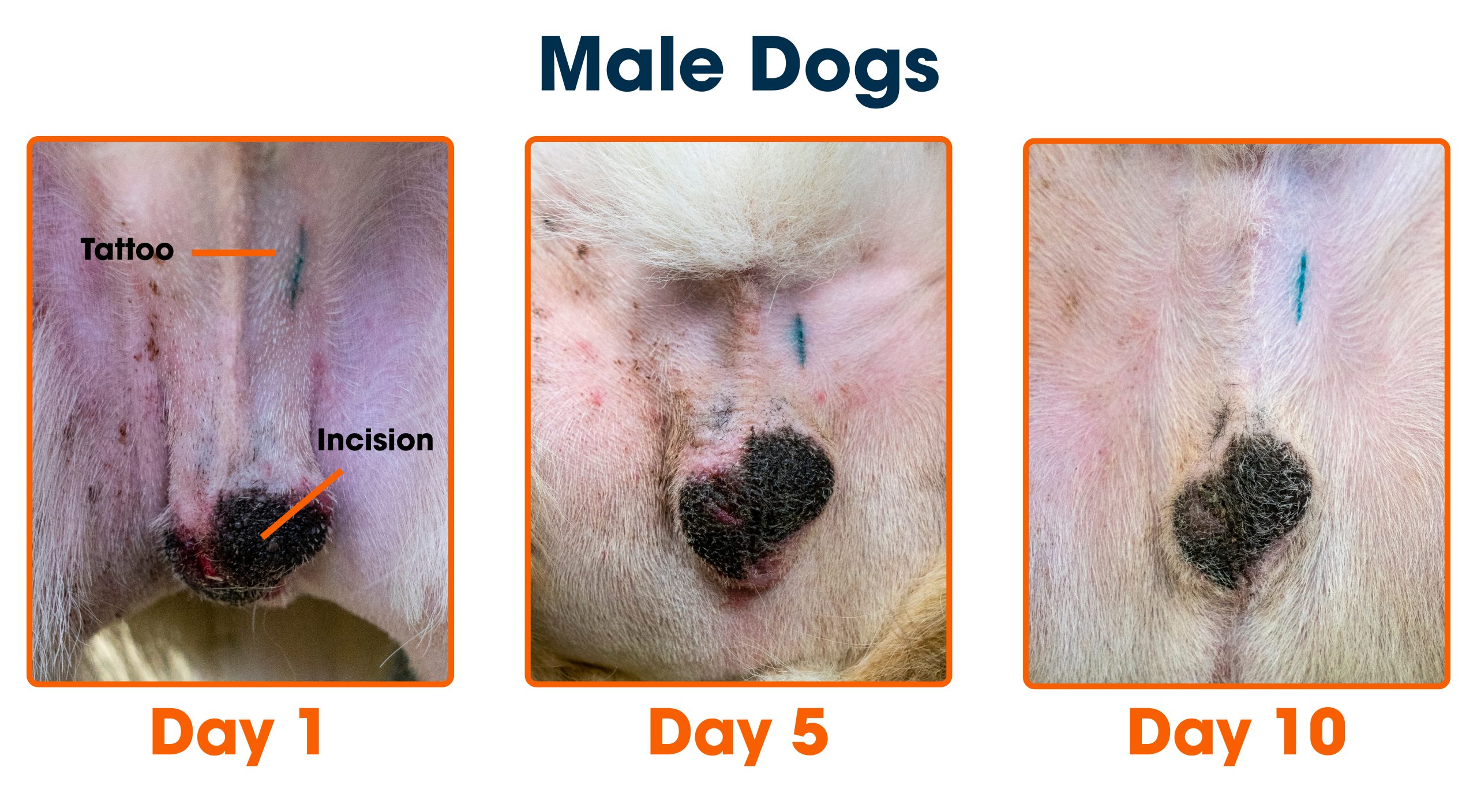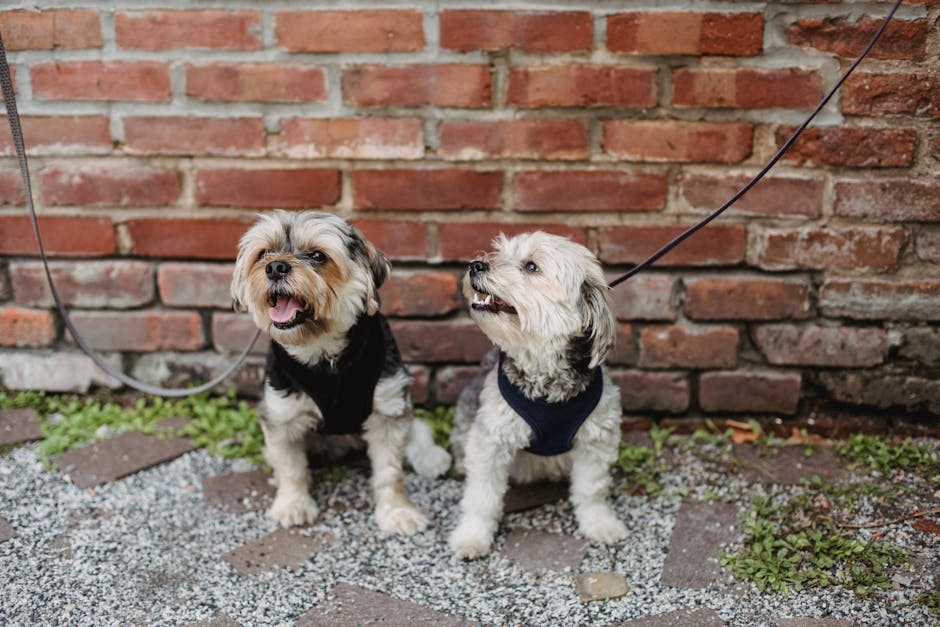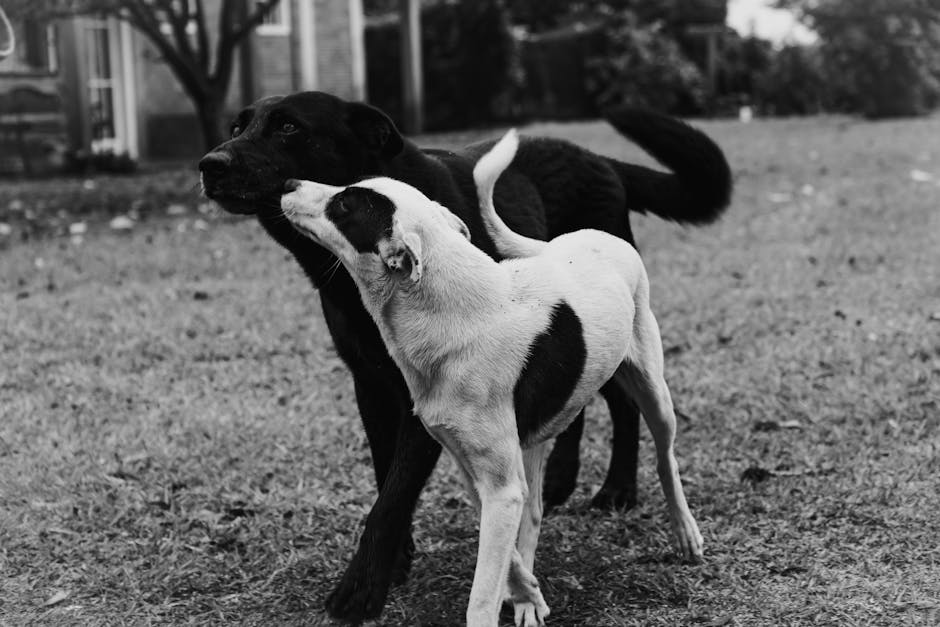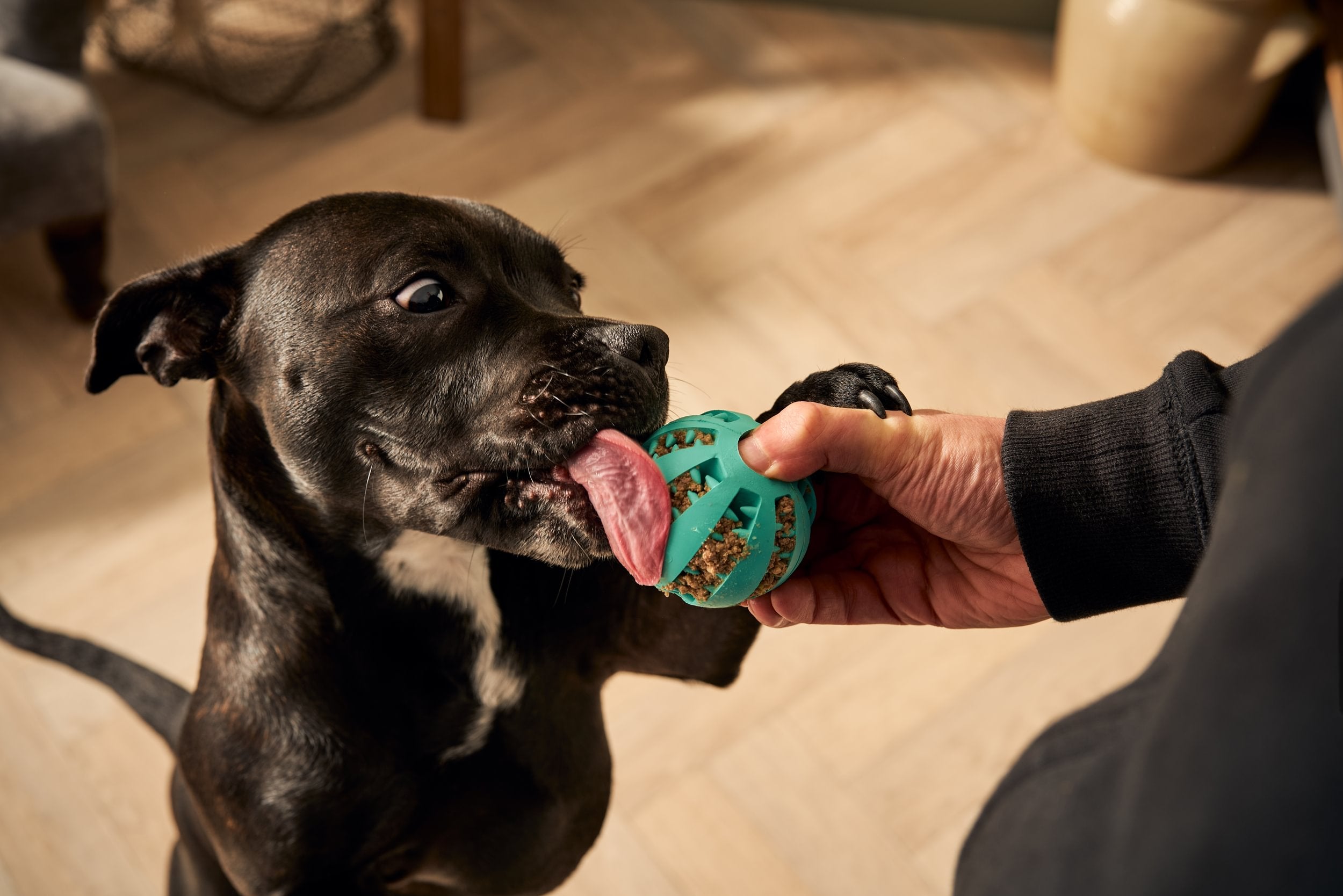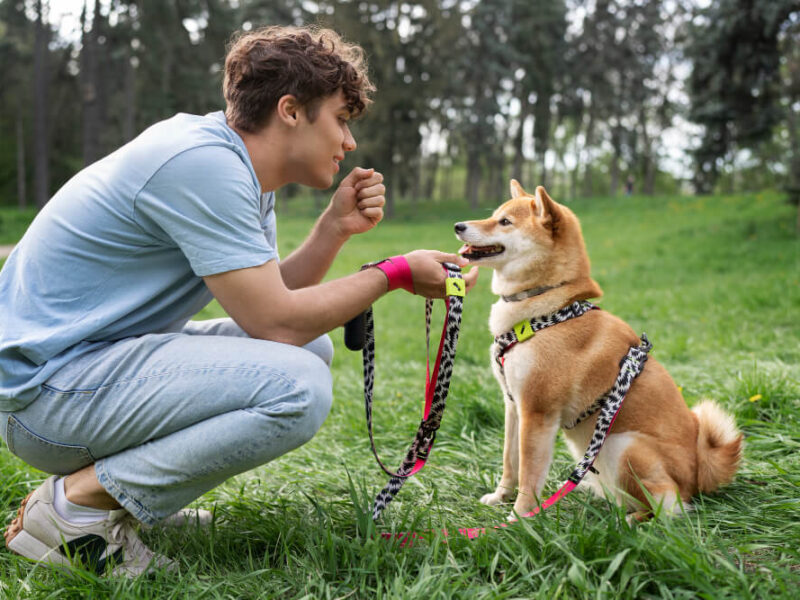Have you ever wondered if every dog truly needs obedience training? Whether you’re a new dog owner or have had pets for years, understanding this can change how you and your furry friend live together.
Obedience training isn’t just about teaching tricks—it’s about building a strong bond, keeping your dog safe, and making daily life easier for both of you. Keep reading to discover why obedience training might be the key to a happier, healthier relationship with your dog.
Why Obedience Training Matters
Why does obedience training matter for dogs? It’s more than just teaching them to sit or stay. Obedience training lays the foundation for a harmonious relationship between you and your furry friend. Imagine being able to communicate effectively with your dog, understanding each other’s needs and boundaries. This is the essence of why obedience training is crucial.
Benefits For Dogs
Obedience training provides mental stimulation for dogs, keeping their minds active and engaged. A well-trained dog is often happier and more confident, knowing what is expected of them. Moreover, it ensures their safety, as they learn to respond to commands that could prevent them from running into danger.
- Improves mental health and well-being
- Increases confidence and reduces anxiety
- Enhances safety through command response
Benefits For Owners
For you as an owner, obedience training can transform the chaos of pet ownership into a joyful experience. It makes everyday activities like walks and vet visits smoother and stress-free. Plus, it strengthens the bond between you and your dog, fostering mutual respect and understanding.
- Ensures smoother daily routines and activities
- Reduces stress and frustration
- Strengthens owner-dog relationship
Have you ever wondered why some dogs seem more attuned to their owners? It often boils down to effective training. Investing in obedience training might just be the secret to unlocking a rewarding companionship with your dog. What would a more harmonious relationship with your dog look like?
Factors Influencing Training Needs
Not all dogs need the same level of obedience training. Several factors influence how much training a dog requires. Understanding these factors helps tailor the training approach. It also improves the dog’s behavior and strengthens the bond with its owner.
Breed Characteristics
Different breeds have distinct traits that affect training needs. Some breeds are naturally eager to learn and respond well to commands. Others may be stubborn or independent, requiring more patience and consistent training. For example, working breeds often need more mental stimulation and structured training. Small companion breeds might need less formal obedience but still benefit from basic commands.
Age And Development Stage
Puppies need different training than adult or senior dogs. Young dogs are more adaptable and learn quickly. Early training helps prevent bad habits from forming. Adult dogs might require retraining to correct unwanted behaviors. Older dogs can learn, but training sessions should be shorter and gentler. Age affects attention span and energy levels, shaping the training plan.
Temperament And Behavior
Every dog has a unique personality that impacts training. Calm dogs might learn commands faster. Anxious or fearful dogs need gentle, patient training to build confidence. Aggressive behavior requires careful handling and often professional help. Understanding a dog’s temperament helps set realistic training goals. Tailoring training to behavior ensures better results and a happier dog.
Training Methods And Approaches
Choosing the right training method can make a huge difference in how your dog learns and responds. Each approach has its own style and benefits, and understanding these can help you decide what fits best with your dog’s personality and your lifestyle. Let’s break down some popular training methods so you can find the one that clicks with you and your furry friend.
Positive Reinforcement
Positive reinforcement focuses on rewarding good behavior to encourage it to happen again. It’s simple: when your dog does something right, you give them a treat, praise, or a toy. This method builds trust and makes learning a fun experience for your dog.
Many dog owners see faster results with positive reinforcement because dogs naturally want to repeat behaviors that bring rewards. Have you noticed how your dog’s tail wags when you offer a treat after they sit? That’s motivation in action.
Clicker Training
Clicker training uses a small device that makes a clicking sound to mark the exact moment your dog does what you want. This precise communication helps your dog understand which behavior earned the reward.
Using a clicker can speed up the learning process because it’s clear and consistent. If you’ve ever struggled to time your praise perfectly, a clicker might solve that problem for you and your dog.
Traditional Techniques
Traditional training often relies on commands, corrections, and sometimes physical cues to guide your dog. While some people find success here, it requires consistency and a good understanding of your dog’s limits.
It’s important to avoid harsh punishments, which can harm your relationship with your dog and cause fear or anxiety. Have you ever wondered if your dog is responding because they want to or because they’re scared? That’s a key question when considering traditional methods.

Credit: www.akc.org
Signs Your Dog Needs Training
Dogs show signs when they need obedience training. Recognizing these signs early helps prevent bigger problems. Training improves your dog’s behavior and your relationship. Watch for common signals that suggest training is necessary.
Behavioral Issues
Unwanted behaviors often mean your dog needs training. These include excessive barking, chewing, or digging. Aggression toward people or other animals is a serious sign. Jumping on guests or pulling on the leash also shows poor control. Training helps correct these behaviors and promotes calmness.
Lack Of Socialization
A dog that fears new places or people may lack social skills. Avoiding other dogs or hiding shows discomfort. Overreacting to sounds or movements signals anxiety. Socialization training teaches your dog to feel safe. It builds confidence and reduces fear-based reactions.
Difficulty Following Commands
Ignoring simple commands is a clear sign of needed training. Trouble with “sit,” “stay,” or “come” shows poor communication. Inconsistent responses create frustration for both dog and owner. Training strengthens understanding and obedience. It makes daily life easier and safer for your dog.
Training Frequency And Duration
Training frequency and duration play a crucial role in shaping your dog’s behavior and learning progress. How often and how long you engage in training sessions can make a big difference in your dog’s ability to grasp commands and develop good habits. Finding the right balance ensures your dog stays motivated without feeling overwhelmed.
Puppies Vs. Adult Dogs
Puppies have shorter attention spans, so training sessions should be brief but frequent. Aim for 5 to 10 minutes, multiple times a day, to keep their focus sharp and build a strong foundation.
Adult dogs can handle longer sessions, usually around 15 to 30 minutes, depending on their energy and interest levels. However, avoid marathon training sessions that can cause frustration for both you and your dog.
Have you noticed how your puppy’s energy spikes after a nap? That’s the perfect time to practice commands before they get distracted by playtime.
Consistency And Patience
Consistency is the backbone of successful training. Try to train your dog at the same times every day to create a routine they can anticipate and rely on.
Patience is equally important. Dogs learn at their own pace, and pushing too hard can backfire. Celebrate small wins and stay calm when progress seems slow.
Think about how you learned new skills—did rushing help or hinder you? Your dog feels the same way. Slow and steady wins the race.

Credit: argostraining.com
Common Training Challenges
Training a dog often comes with challenges. These hurdles can slow progress and test patience. Recognizing common problems helps owners stay focused and effective. Every dog is unique, so training must adapt to each situation.
Distractions And Environment
Dogs easily get distracted by sounds, smells, and sights. Training in busy places can make it hard for dogs to focus. A noisy park or crowded street might overwhelm a dog’s attention. Starting training in quiet, familiar spaces often works best. Gradually adding distractions helps dogs learn to obey anywhere.
Owner’s Role And Commitment
Owners must stay consistent and patient during training. Mixed signals confuse dogs and slow learning. Regular practice every day creates strong habits. Training takes time and energy, so commitment matters most. An owner’s calm and clear commands guide the dog’s behavior.
Adjusting Techniques
Not all dogs respond to the same methods. Some need gentle praise, others need firm direction. Watching a dog’s reactions helps find the right approach. Changing techniques keeps training effective and fun. Flexibility prevents frustration and encourages steady progress.
Professional Training Options
Professional training options offer structured ways to improve your dog’s behavior and strengthen your bond. Choosing the right format depends on your dog’s personality, your schedule, and your training goals. Let’s look at some common options that suit different needs and lifestyles.
Group Classes
Group classes provide a social setting where your dog can learn alongside others. This environment helps your dog practice obedience with distractions, which is key for real-world behavior. Plus, you get to meet other dog owners and exchange tips.
Group classes usually follow a set curriculum, covering basic commands like sit, stay, and come. They often run for several weeks, giving your dog time to absorb lessons gradually. Have you noticed how your dog reacts around other dogs? Group classes can reveal important social behavior insights.
Private Sessions
Private sessions offer one-on-one attention tailored to your dog’s unique needs. Trainers can focus on specific issues like aggression, anxiety, or leash pulling. This personalized approach often speeds up progress compared to group settings.
Scheduling private sessions lets you work at your own pace and ask detailed questions. Trainers can also observe your home environment for practical advice. If your dog struggles with distractions or complex commands, private sessions could be the best fit.
Online Resources
Online resources bring flexibility to your training routine. You can access videos, tutorials, and live classes from the comfort of your home. This option works well if you have a busy schedule or live far from training centers.
Many platforms offer interactive tools and community support to keep you motivated. However, online learning requires discipline and consistency on your part. Are you ready to commit time daily to train your dog virtually?

Credit: k9connoisseur.com
Frequently Asked Questions
Do All Dog Breeds Require Obedience Training?
Yes, all dog breeds benefit from obedience training. It improves behavior, strengthens bonds, and ensures safety regardless of breed or size.
When Should I Start Obedience Training For My Dog?
Start obedience training as early as 7-8 weeks old. Early training builds good habits and prevents behavioral issues in the future.
Can Obedience Training Help With Aggressive Dog Behavior?
Yes, obedience training helps manage and reduce aggression. It teaches dogs self-control and improves their response to commands and social situations.
Is Professional Obedience Training Necessary For Every Dog?
Not always, but professional training is highly beneficial. Experts provide structured guidance, especially for difficult behaviors or first-time dog owners.
Conclusion
Not all dogs need formal obedience training to behave well. Some dogs learn naturally from their owners and environment. Training helps build good habits and strengthens your bond. It also keeps dogs safe and happy. Small efforts every day can make a big difference.
Choose training based on your dog’s personality and needs. Every dog deserves kindness and patience during learning. Obedience training can be simple and rewarding for both of you.

